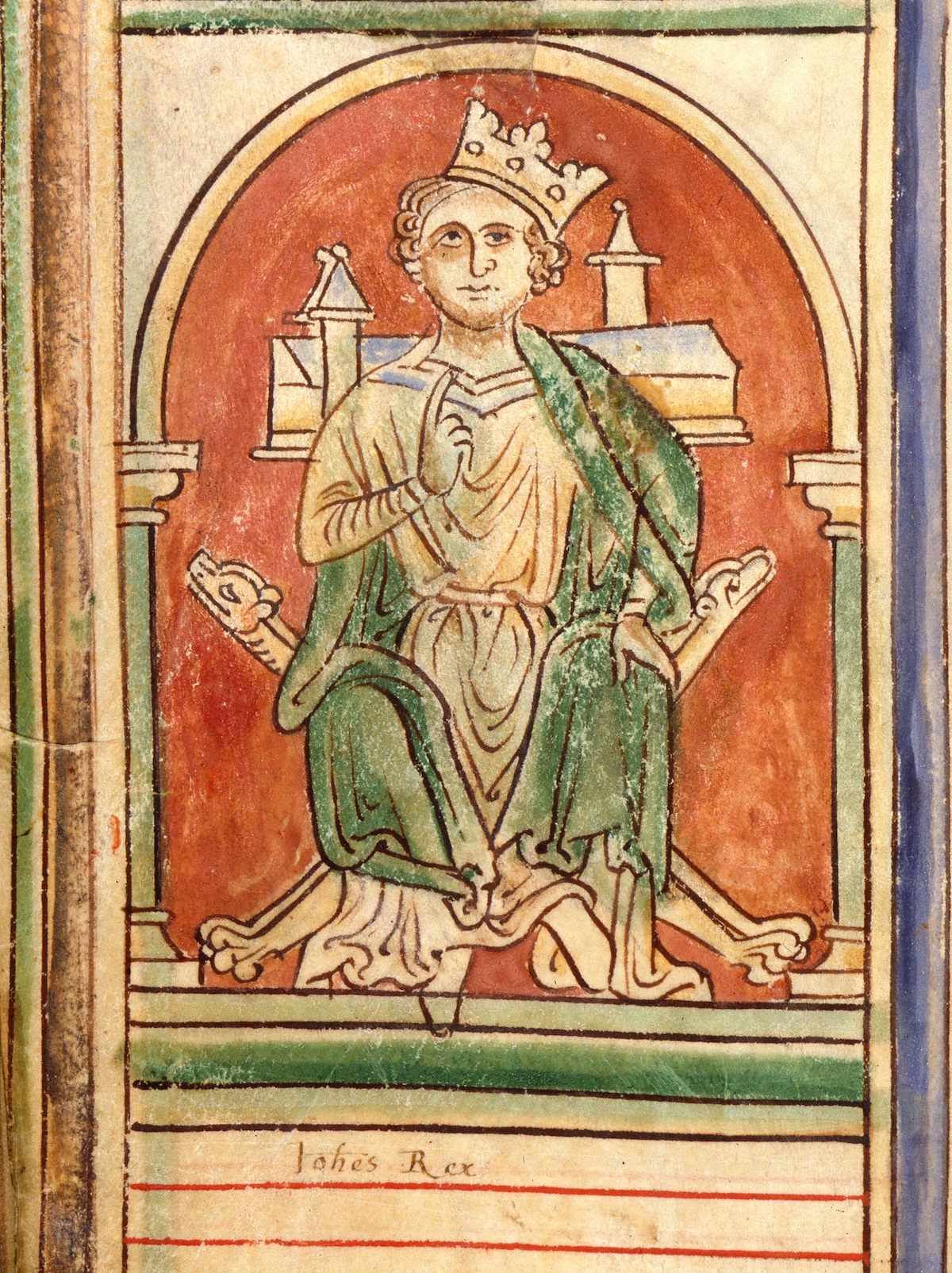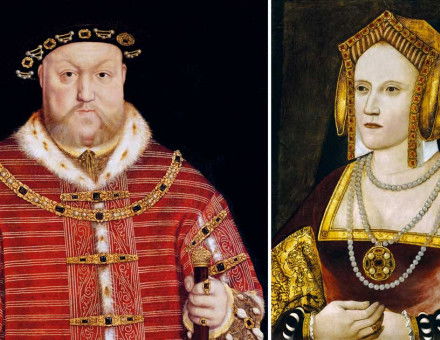King John’s Lost Treasure
The loss of his treasure on the road to war was said to have brought about King John’s demise. What happened to it?

In October 1216 King John met with disaster in the Wash. Ever since the sealing of Magna Carta, a little over a year before, he had been plotting how best to avenge himself on the barons who had wrested it from him – and, soon enough, England had been plunged into civil war. The barons, disunited and leaderless, were on the back foot. Realising they needed help, they invited Louis, the son of the French king Philip Augustus, to take the throne and in May 1216 an invasion was duly launched. John was now in serious trouble. After raising reinforcements on the Welsh border, he raced across to Windsor and on to East Anglia. His energy was remarkable. He rode 40, even 50 miles each day, and refused to sleep before the affairs of state had been settled. On 9 October he arrived in King’s Lynn – an important staging post on his way to Lincolnshire – and received a rapturous welcome. But almost immediately things began to come unstuck. As the contemporary chronicler Roger of Wendover explained:
Then, starting out towards the north, in the river which is called Welestreme, by an unexpected accident he lost all his wagons, carts, and pack horses with the treasures, precious vessels, and all the other things which he loved with so much care; for the ground was opened in the midst of the waves, and bottomless whirlpools, which swallowed them all up, with the men and the horses, so that not one foot soldier escaped to announce the disaster to the king. The king, nevertheless, having barely escaped with his army, passed the following night at an abbey which is called Swineshead, where, as it was thought, there befell him so great grief of mind on account of the things swallowed up by the waves that he was seized with sharp fevers and began to be grievously sick.
From here, things deteriorated. According to Roger, John only made his illness worse by binge-eating. That same night, he gorged himself silly with peaches and cider, ‘strongly excit[ing] and inflam[ing] the feverish heat within him’. With great effort, he tried to carry on; but by the time he reached Newark Castle, he could go no further. On the night of 18 October, he died.
Dazzling jewels
A mystery, however, remains. What did John actually lose in the Wash? For all its vividness, Roger of Wendover’s account contains precious little information. We know that it was valuable. But how valuable? Clearly, it wasn’t so vast that the shock of the accident really made John sick, as Roger claimed. A slightly later chronicler, Ralph of Coggeshall, indicates that the king most likely caught dysentery in King’s Lynn, before the treasure was lost. But that it was of immense personal value to him is in no doubt. Matthew Paris tellingly observed that, in addition to ‘arms, tents, and victuals’, the baggage train contained ‘the things which the king, next to his life held too dear in the world’. And this is unlikely to be an exaggeration. After all, John was at war. If he was to pay his troops, he needed every scrap of treasure on hand.
But what exactly does that mean? What treasures were available to John? As A.V. Jenkinson pointed out a little over a century ago, the king is known to have owned a number of dazzling jewels, to which he was keenly attached. These included a clasp studded with emeralds and rubies he had been given by the bishop of Norwich, and four stunning rings he had received 11 years earlier from Pope Innocent III.
There were other personal treasures, too. As soon as John had decided to repudiate Magna Carta he had immediately set about recovering whatever precious items he had left in the care of religious institutions around the kingdom. On 24 June 1215 he wrote to 17 prelates asking them to send him ‘all that you have of ours in your custody, both of recent and of ancient commenting, such as jewels, golden and silver and other’. Within a month he had collected no less than ‘143 cups and 14 goblets, 14 dishes, 8 flagons, 5 pairs of basins, 40 belts, 6 clasps, 16 staffs, 52 rings and 2 pendants’ – mostly in gold or silver – as well as ‘4 shrines, 2 gold crosses, 3 gold combs, a gold vessel ornamented with pearls … 2 candelabra, 2 thuribles and 3 golden phylacteries’.
Most striking of all was the royal regalia. He possessed two sets of these, including one which had belonged to his grandmother, Empress Matilda. Traditionally, they had been stored in Westminster Abbey; but it had been John’s habit to leave them with the Knights Hospitaller and the Knights Templar. We know for a fact that, even before Magna Carta had been sealed, he had asked for them back. On 28 May 1215 the Templars returned Matilda’s regalia, including a magnificent German crown, two swords and a royal pallium of purple. A year later the Hospitallers delivered the rest.
No trace
So which of these treasures did John have with him in October 1216? Well, clearly not all of them. Some – perhaps the majority – had already been melted down or sold off to pay his soldiers. According to the Histoire de Guillaume le Maréchal, begun in around 1224, John had almost no money left by the end of his reign and, by extension, not much treasure either. At the same time, some may also have been set aside for his son, Henry III. David Carpenter has pointed out that there are many items on the list of regalia used at Henry’s second coronation, held at Westminster in 1220, which seem to correspond to those belonging to John’s own regalia in 1216, including a crown, sword, sceptre and tunic – indicating they had been kept safe.
But at least some of this fabulous treasure must have been lost. Again, Matthew Paris provides us with a clue. According to his Historia minor, when Henry III received his first coronation in Gloucester, nine days after John’s death, he was crowned with a ‘golden circlet’, rather than a crown. This might well have been simply because it was too dangerous to move a crown even a short distance at such a chaotic time. But it is just as likely that at least one of John’s crowns had been mislaid. It is perhaps no coincidence that it is also at around this time that Matilda’s crown vanishes from the documentary record; and there are several other items belonging to John’s regalia of which no trace has been found.
The path
So if some of John’s treasure was indeed lost, where is it? It is difficult to be sure. The topography of the Wash has changed dramatically over time. Back in the 13th century it had a quite different appearance to today. Now known as the Nene, the river Wellstream was then a much larger waterway. Just outside Wisbech, it flowed out into a huge estuary, several miles across, reaching at its widest from King’s Lynn in the west to Long Sutton in the east. It must have been a marshy and treacherous place, as difficult to cross as it is to reconstruct. Surprisingly, however, it is possible to make some guess as to the likely path followed by John’s treasure.
We know from Roger of Wendover that the king and his baggage train travelled by different routes. Given the gravity of the situation, John needed to make haste. Leaving the slow-moving wagons behind, he set off with a small retinue by the quickest route into Lincolnshire. After leaving King’s Lynn, he crossed the Great Ouse and made for Wisbech, 15 miles to the southwest, where he spent the night. The next day, he crossed the bridge over the Wellstream and took the road north.
Meanwhile, the baggage train followed a more direct, but slower, route. Plenty of theories about its course have been put forward, but perhaps the most influential was proposed by W.H. St John Hope in 1906. According to him, the baggage train followed the road west from King’s Lynn to the village of Walpole Cross Keys, which then lay on the banks of the Wellstream. From there to Long Sutton, on the other side, the estuary was around 4.5 miles wide. At low tide, however, there was a narrow path over the sands. If led by a suitable guide, horses and wagons could easily make it across. The plan was no doubt to have continued westwards towards Holbeach and Spalding, and catch up with John in Lincolnshire. But on the way the baggage train ran afoul – either by being swept away by a sudden, unexpected tide, or by wandering off the path at an inopportune moment and getting trapped in the sucking mud.
This theory enjoyed a tremendous vogue for a while. By 1913, however, doubts had started to be raised. Engineers and hydrographers argued that, while St John Hope’s basic idea was correct, his proposed path didn’t tally with what was known about the historical landscape. But before any further studies could be done, the First World War intervened. Not until 1972 did G.F. Tagg manage to pick up the threads. Using resistivity surveying, Tagg and his team were able to identify what appeared to be a pathway, some three miles long, a little further to the south.
But where on this path did the accident happen? There have been some promising leads. In 2016 a dig at Tydd St Giles – halfway between Wisbech and Long Sutton – turned up a few minor artefacts; and in March 2024 the planned construction of a new solar farm near Walpole Marsh necessitated a larger and perhaps more promising excavation led by the West Norfolk and King’s Lynn Archaeological Society. So far, however, no gold or jewels have been found.
This doesn’t mean that the treasure won’t turn up some day – perhaps in the most unexpected of places. After all, it wasn’t so long ago that Richard III’s body was found underneath a car park. But for the moment, the mystery of King John’s lost treasure remains a riddle for the sands.
Alexander Lee is a fellow in the Centre for the Study of the Renaissance at the University of Warwick. His latest book, Machiavelli: His Life and Times, is now available in paperback.






